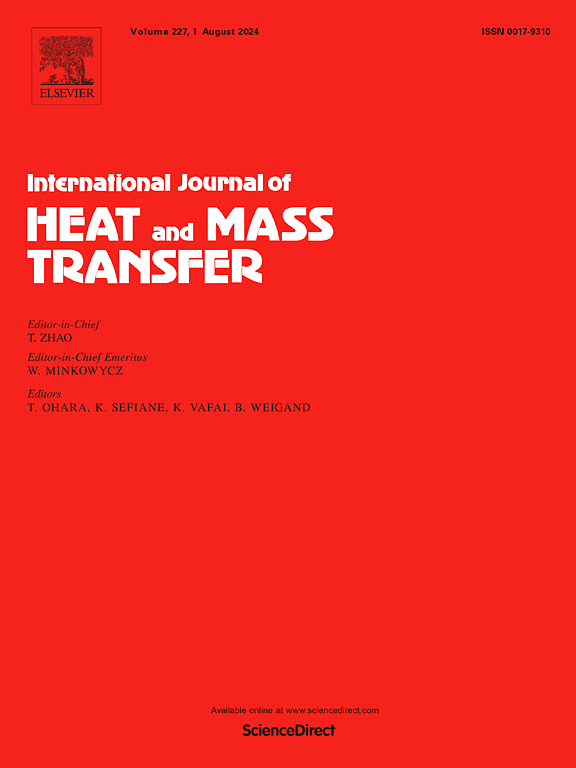对混合过程中液体中的微波加热进行快速高效数值模拟的新方法
IF 5
2区 工程技术
Q1 ENGINEERING, MECHANICAL
International Journal of Heat and Mass Transfer
Pub Date : 2024-11-12
DOI:10.1016/j.ijheatmasstransfer.2024.126425
引用次数: 0
摘要
与传统方法相比,微波辅助化学反应可缩短反应时间,降低温度,减少副反应,因此有可能成为更持久的工艺强化途径。尽管人们普遍误认为微波加热是均匀的,但许多工艺过程的温度分布在整个体积上会有显著变化,甚至在远低于工作波长的长度尺度上也是如此。在给定过程的设计和优化阶段,通常会采用数值方法,然而,由于需要大量相互依存的物理因素,液体中微波加热的快速高效建模仍然是一项重大挑战,特别是在计算资源方面。在此,我们报告了一种新的多物理场仿真方法,该方法可对搅拌过程中的液体微波加热进行建模,所需计算资源较少,温度预测的相对均方根误差在 2.78% 以内。通过应用冷冻转子方法,与传统的滑动网格方法相比,预测近乎完美的温度曲线的收敛时间快了约 600 倍。我们提出的模型可用于以快速和节省资源的方式模拟真实反应系统。本文章由计算机程序翻译,如有差异,请以英文原文为准。
A novel method for fast and efficient numerical simulation of microwave heating in liquids during mixing
Microwave-assisted chemical reactions present potentially more sustainable routes for process intensification compared with traditional approaches, due to the reduction of reaction times, temperatures, and side reactions. Despite the common misconception that microwave heating is uniform, many processes can be expected to show temperature distributions that vary significantly over the volume, even at length scales far below the operating wavelength. Numerical methods are often employed in the design and optimization phase of a given process, however, due to the multitude of interdependent physics required; the fast and efficient modelling of microwave heating in liquids remains a significant challenge, particularly with respect to computational resources. Here, we report a new multi-physics simulation methodology that models microwave heating of liquids during agitation, requiring less computational resources and delivering temperature predictions within 2.78 % of relative root mean square error. By applying the frozen rotor approach, near-perfect temperature profiles are predicted at approximately 600 times faster convergence time compared to the conventional sliding mesh method. Our proposed model can be used to mimic real reaction systems in a fast and resource-efficient way.
求助全文
通过发布文献求助,成功后即可免费获取论文全文。
去求助
来源期刊
CiteScore
10.30
自引率
13.50%
发文量
1319
审稿时长
41 days
期刊介绍:
International Journal of Heat and Mass Transfer is the vehicle for the exchange of basic ideas in heat and mass transfer between research workers and engineers throughout the world. It focuses on both analytical and experimental research, with an emphasis on contributions which increase the basic understanding of transfer processes and their application to engineering problems.
Topics include:
-New methods of measuring and/or correlating transport-property data
-Energy engineering
-Environmental applications of heat and/or mass transfer

 求助内容:
求助内容: 应助结果提醒方式:
应助结果提醒方式:


